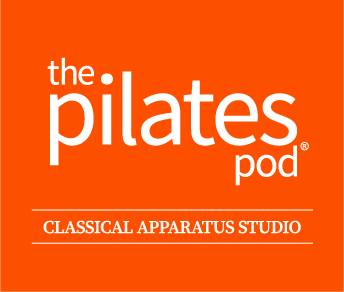You can’t beat a good bit of bread and butter can you? I like good bread. Tasty, delicious, lovingly baked by people who know what they are doing. The only time I like a bit of thin, tasteless, bleached, white bread was after 40 hours in labour. Then that toast, is the best toast ever!
And butter, I like real butter. Not that trans fat margarine stuff that my mum got us all into in the 80’s and 90’s with the rise of diet food. Nope, give me a tasty, well churned bit of butter any day.
Butter on hot toast… well now we’re talking.
That’s the Reformer and the Mat. Mat is the bread. The backbone of the hot buttered toast. But the Reformer, well that’s the butter. Makes the mat work better. Feel nicer, taste better.
If I haven’t lost you already with talk of food (why does my Pilates chat always have so many food related analogies?) then we shall continue. But if you need to stop and make a quick toaster trip, I’ll wait…
Although it has been overshadowed by the ubiquitous Reformer, the Mat work is the backbone of the Pilates method. “Reformer Pilates” has become the fashionable workout, with it being common place to see up to 20 reformers in one class.
All the skills that make Pilates so life- and body-changing can be acquired on the Mat. The intellectual rigor that makes Pilates more than just another form of exercise is also found on the Mat. Rather than being a training wheels version of the supposedly more advanced apparatus work, most Pilates aficionados agree that the Mat work is actually more challenging. There’s nothing between you and the Mat. Like the personal trainers say, “It’s all you.”
Despite the slew of Reformer classes that have sprung up in the age of ClassPass, the Mat work is still most people’s introduction to the Pilates method. Whether they take a group class at a gym or fitness studio or stream a class at home (may we suggest Pilates Anytime?), exercisers discover a system that is efficient and endlessly challenging. With no special equipment needed other than a Mat to cushion the spine, it’s a cost-effective and portable workout that can be done anywhere. The genius of Contrology (as the work is called in Return to Life) is that it creates a supple, flexible body in which no one muscle is over-developed. Even the smaller muscles are worked and strengthened.
Why is it still relevant today?
Return to Life is required reading for most Pilates teacher training. The most familiar section is the archival black-and-white photographs of Joe performing the 34 original Mat exercises along with detailed instructions in his own words. Most Pilates instructors possess a well-thumbed copy and return to it often. Return to Life reveals that Joe was way ahead of his time. While his writing sounds oddly formal to today’s reader (“Standing also is very important and should be practiced at all times until it is mastered.”), his advice is still relevant, perhaps even more now that we are all tethered to our devices 24/7. Return to Life anticipates the popular interest in ergonomics, progressive child-rearing practices, and even the Japanese practice of “forest bathing” (spending time in nature as a form of eco-therapy). It’s easy to imagine what he might have written about the rise of the smartphone and its deleterious effects on the quality of both attention and posture.
Reading Joseph’s philosophy in his own words is the closest we can get to imagining what he was like as a teacher and thinker. While it is interesting to learn of his strong opinions about childhood vaccinations and household furniture, the 34 Mat exercises, referred to simply as “The Exercises,” are his most lasting legacy. The blueprints of all the other Pilates repertoire are instantly recognizable in the Mat work. For example, the rounded, C-shaped spine of the Roll Up recalls the Elephant on the Reformer, the Pull Up on the Wunda Chair, and the Push Through on the Cadillac, for example. The Mat work, then, is an essential tool for anyone seriously interested in Pilates. Pilates teacher Benjamin Degenhardt created an annual event called “March MATness” to cultivate an appreciation and respect for the original Mat work. For each of the 31 days in March, beginning with the Hundred on March 1, Pilates enthusiasts from all over the world post photographs or videos of themselves performing a single exercise (three days are assigned two closely related exercises), using the #MarchMATness hashtag. Selected images appear on the official March MATness social media feeds. Ready to join the celebration? Pilates Anytime offers detailed instructions for each of the original 34 exercises here.
Immersing oneself in the original exercises is a bracing counterpoint to the current “kitchen sink” approach to Pilates. What would Joseph Pilates make of specialized Pilates routines for equestrians or surfers, for example? While he hoped for a future in which his Contrology exercises were taught alongside reading and writing in elementary schools, he probably couldn’t have imagined the variations and riffs that fall under the umbrella term “Pilates.” Fresh and original takes on the traditional repertoire keep the work engaging and fresh for teachers and practitioners alike, while also making Pilates accessible and appealing to newbies. Creative tweaks on old standbys let instructors emphasize a particular muscle or muscle group, or simply add challenge. Just as in music, dance, or writing, understanding the building blocks and D.N.A. of one’s discipline is vital. Once you feel the work as Joseph Pilates intended, you will get even more out of the myriad and fascinating variations that exist today.
